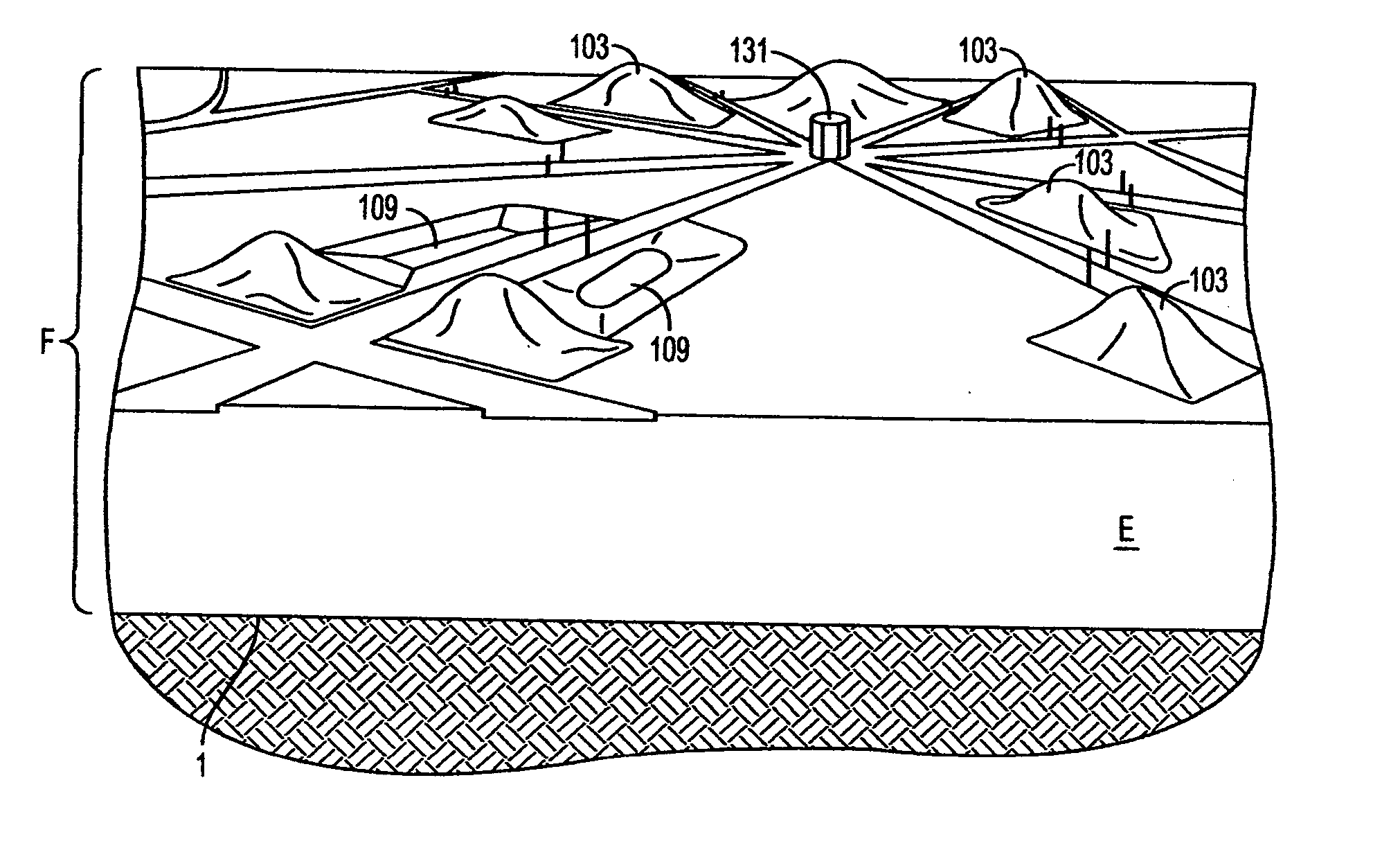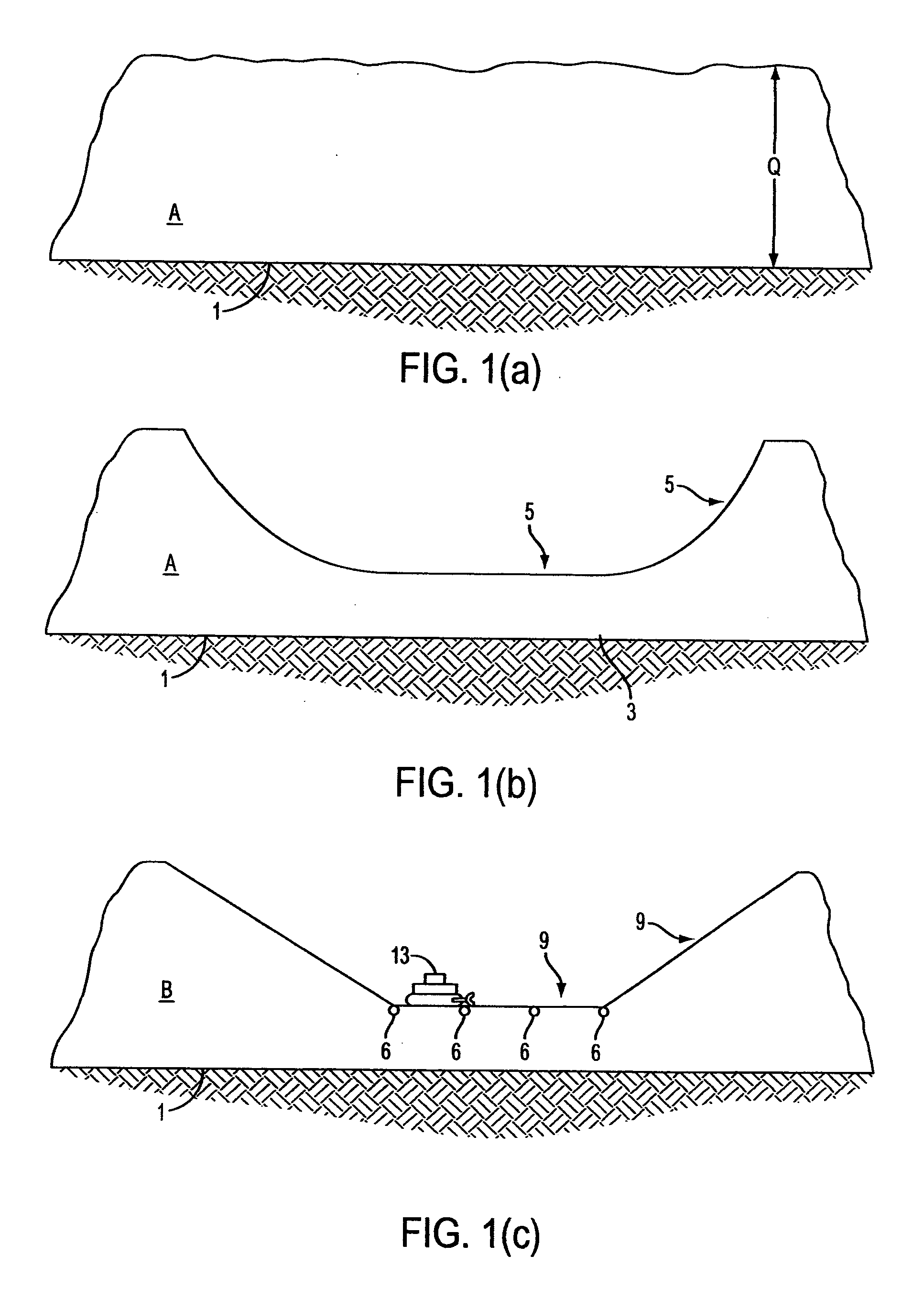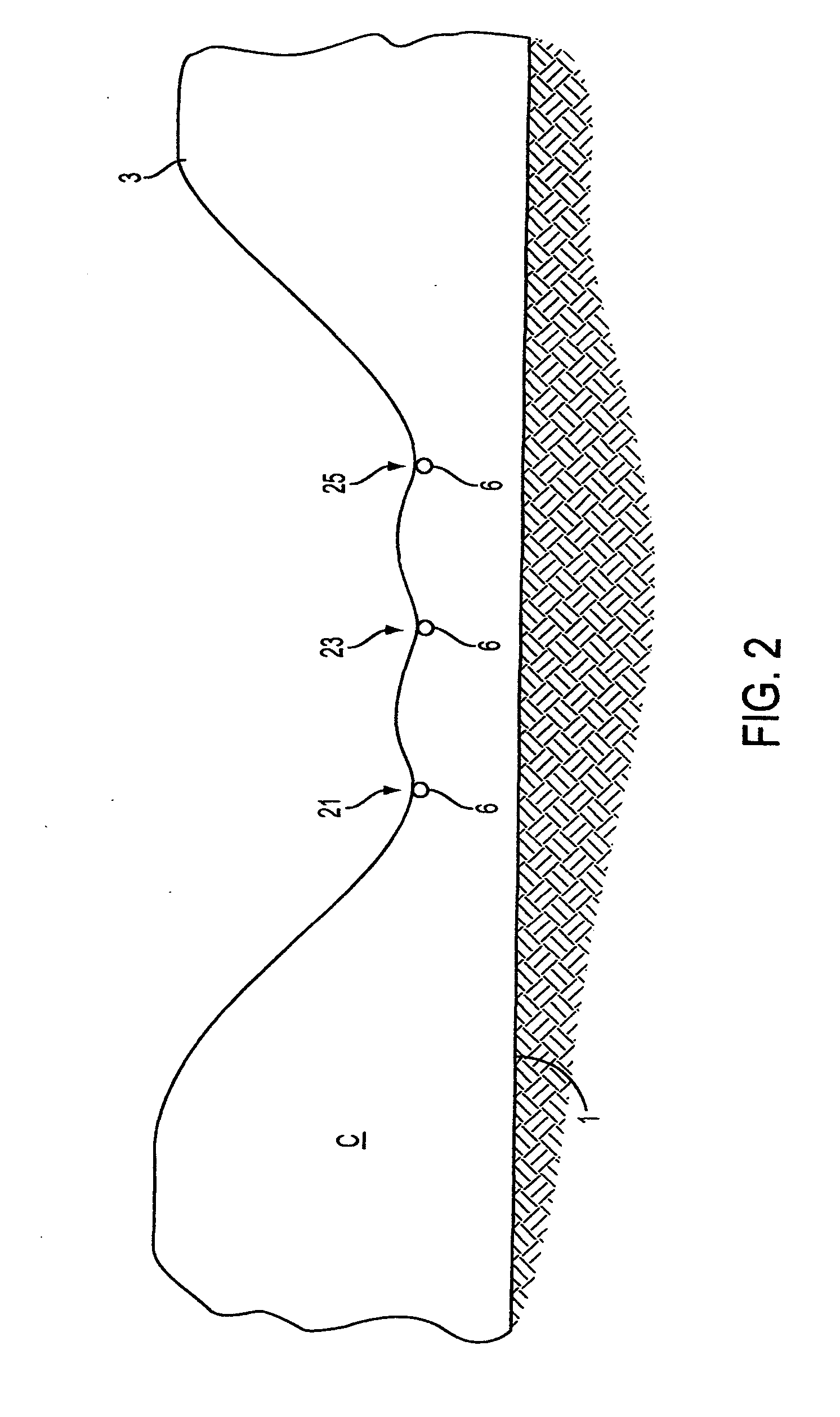Conversion of gypsum stacks to waste containment facilities and related construction & business methods
a technology of gypsum and waste containment facilities, which is applied in the direction of landfill technologies, storage devices, constructions, etc., can solve the problems of imposing post-closure maintenance requirements, affecting the economic viability of gypsum or phosphogypsum waste storage, and requiring ongoing expenses for decades, so as to achieve the effect of reducing or eliminating the cost of excavating a gypsum stack, reducing the cost of excavation, and high compressive strength
- Summary
- Abstract
- Description
- Claims
- Application Information
AI Technical Summary
Benefits of technology
Problems solved by technology
Method used
Image
Examples
Embodiment Construction
[0042] The present invention will now be described in detail with respect to FIGS. 1 through 6. As one of skill in the art of waste containment facilities will comprehend, the embodiments of the present invention shown in the accompanying figures are exemplary and not exclusive. Numerous other embodiments and permutations of the present invention are within the scope and spirit of the present invention.
[0043] With respect to FIG. 1(a), gypsum stack A comprises waste gypsum or phosphogypsum piled above land having natural ground level 1. Gypsum stack A has thickness dimension Q, typically from 50 to 200 feet thick, and top surface 75.
[0044]FIG. 1(b) shows gypsum stack A, which has been excavated to form concavity 5 of compacted waste gypsum 3. Concavity 5 extends downward from gypsum stack top surface 75, to a desired depth and has curved walls 8. In accordance with the invention, waste gypsum 3 of gypsum stack A has been excavated by means of heavy equipment, such as backhoes or b...
PUM
 Login to View More
Login to View More Abstract
Description
Claims
Application Information
 Login to View More
Login to View More - R&D
- Intellectual Property
- Life Sciences
- Materials
- Tech Scout
- Unparalleled Data Quality
- Higher Quality Content
- 60% Fewer Hallucinations
Browse by: Latest US Patents, China's latest patents, Technical Efficacy Thesaurus, Application Domain, Technology Topic, Popular Technical Reports.
© 2025 PatSnap. All rights reserved.Legal|Privacy policy|Modern Slavery Act Transparency Statement|Sitemap|About US| Contact US: help@patsnap.com



